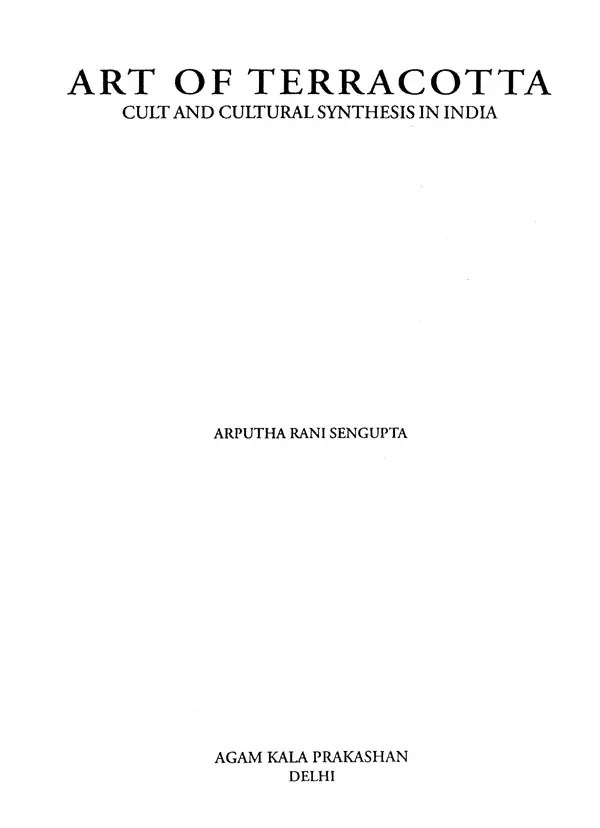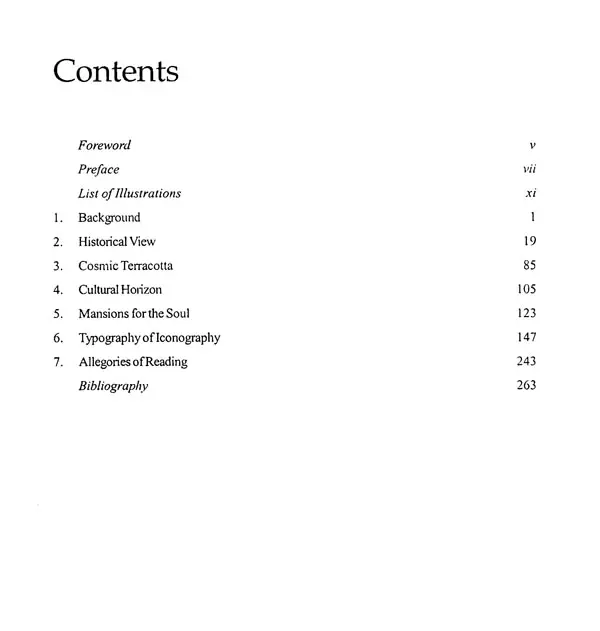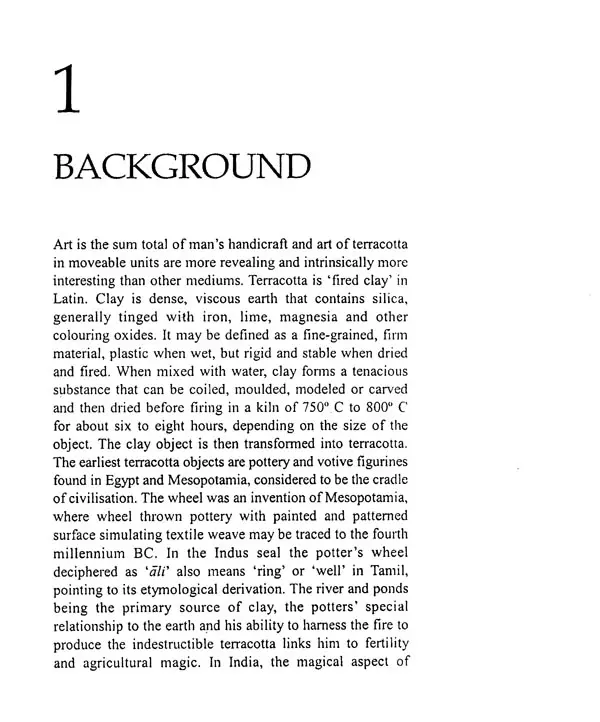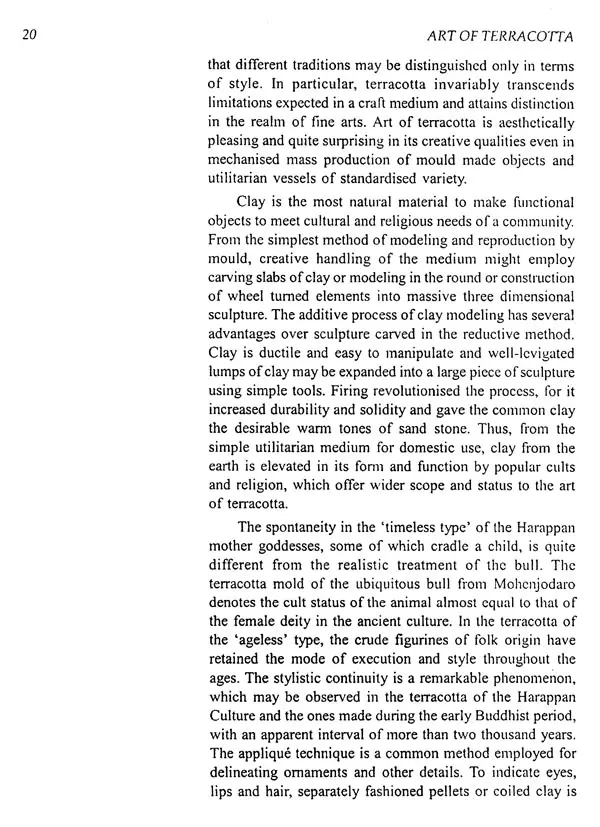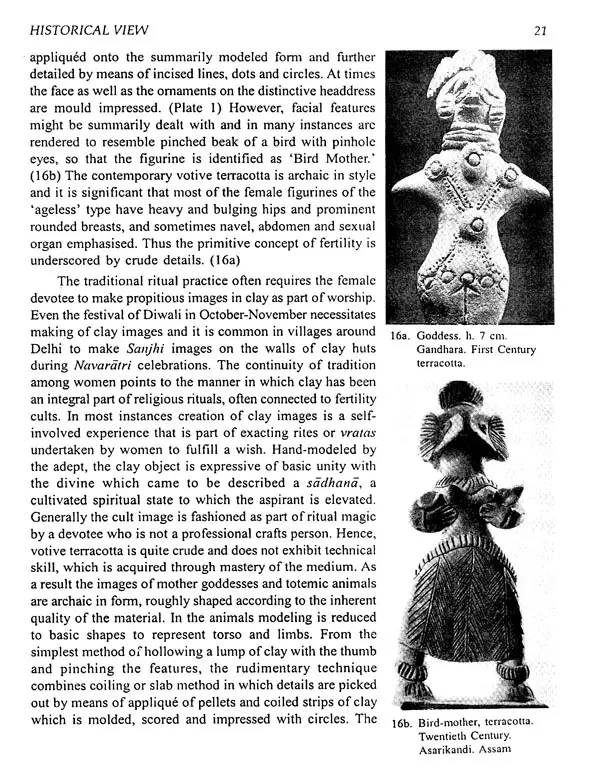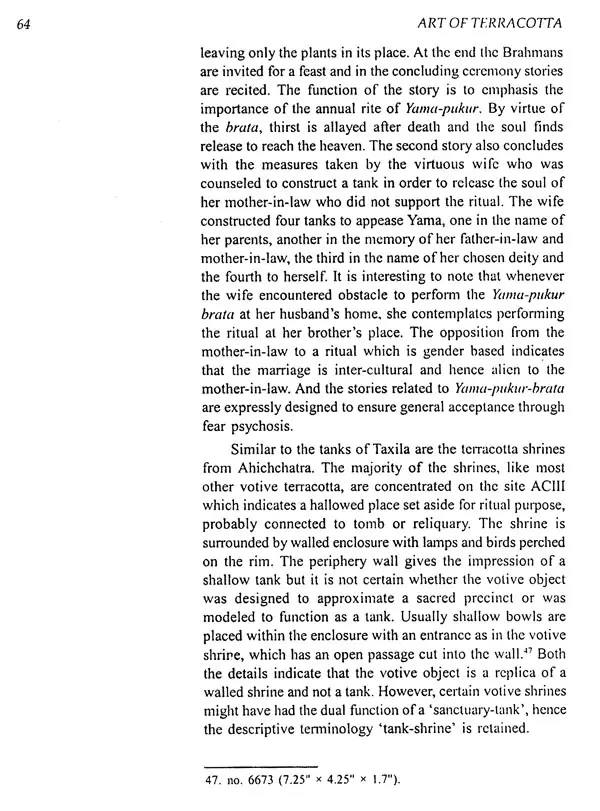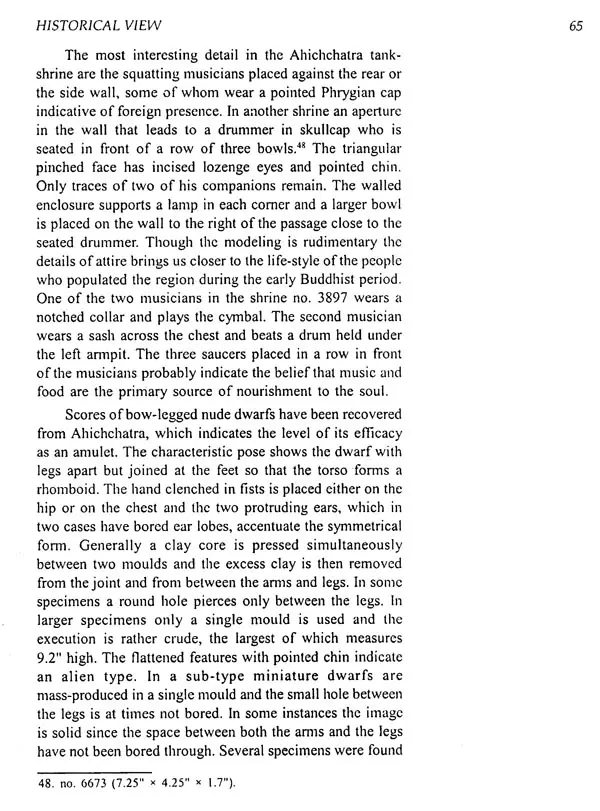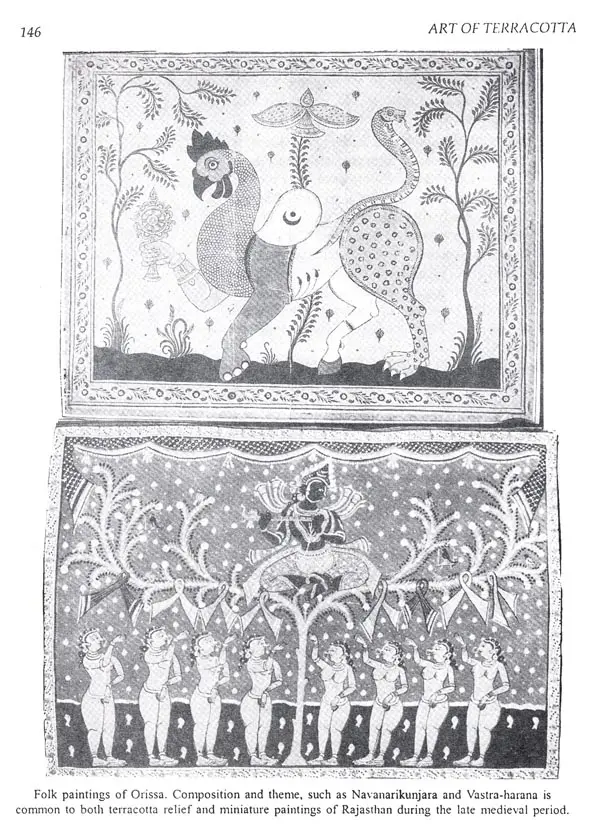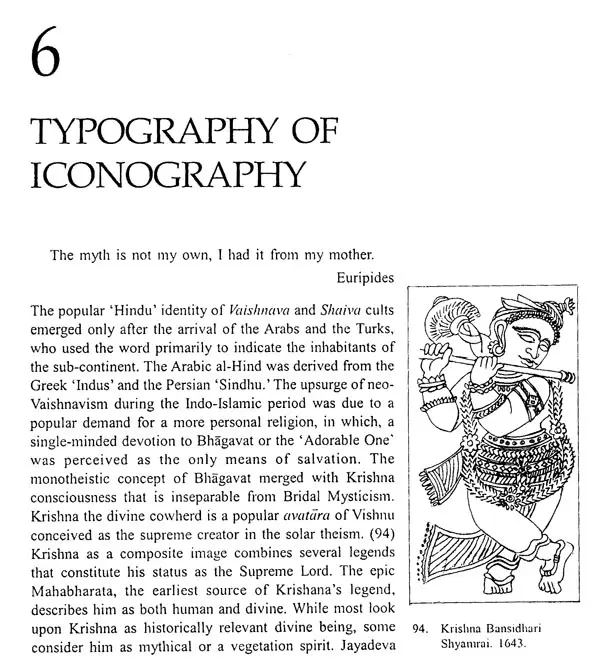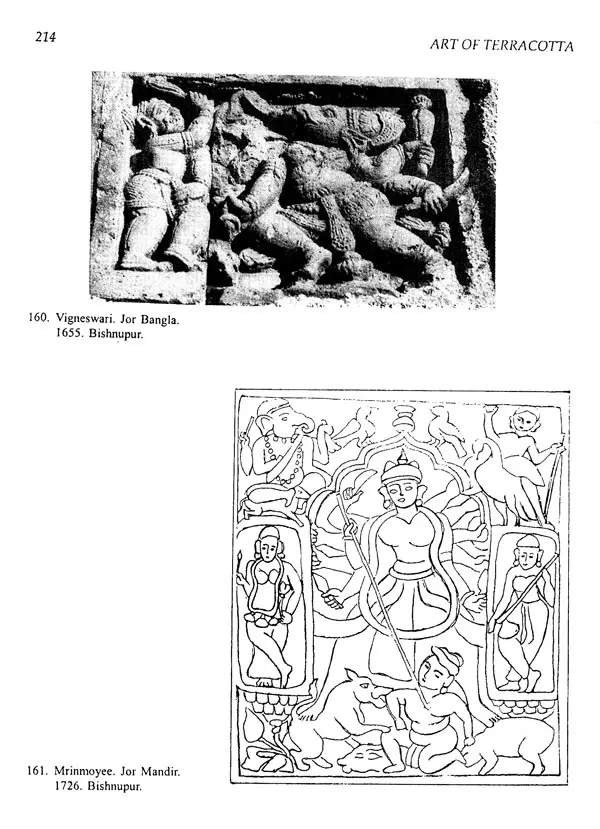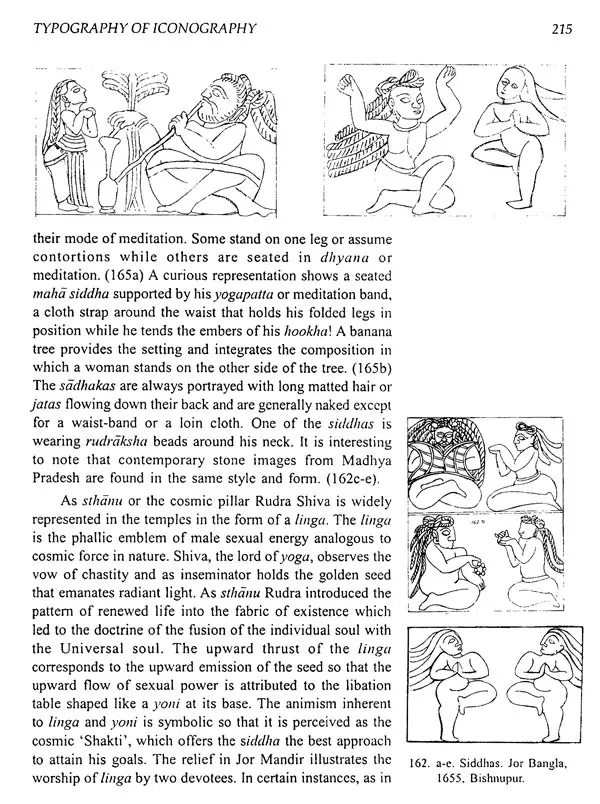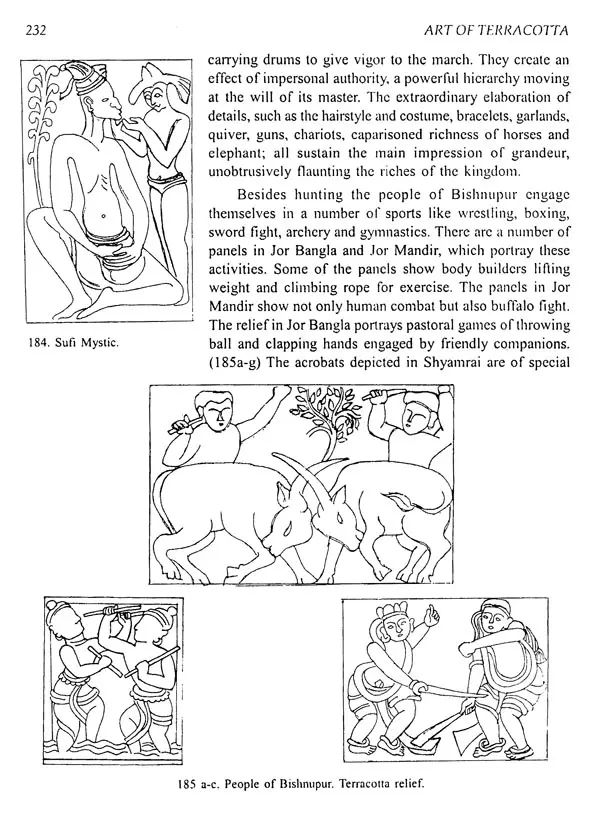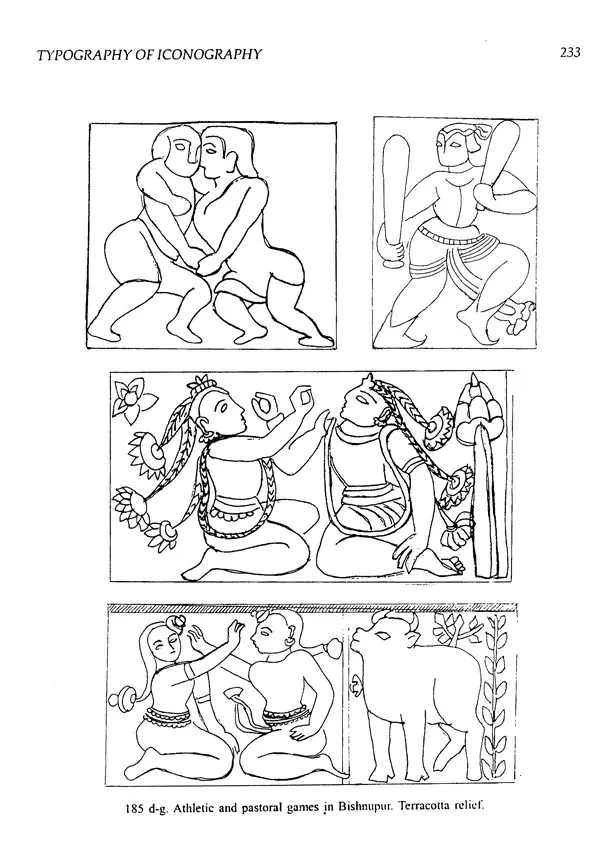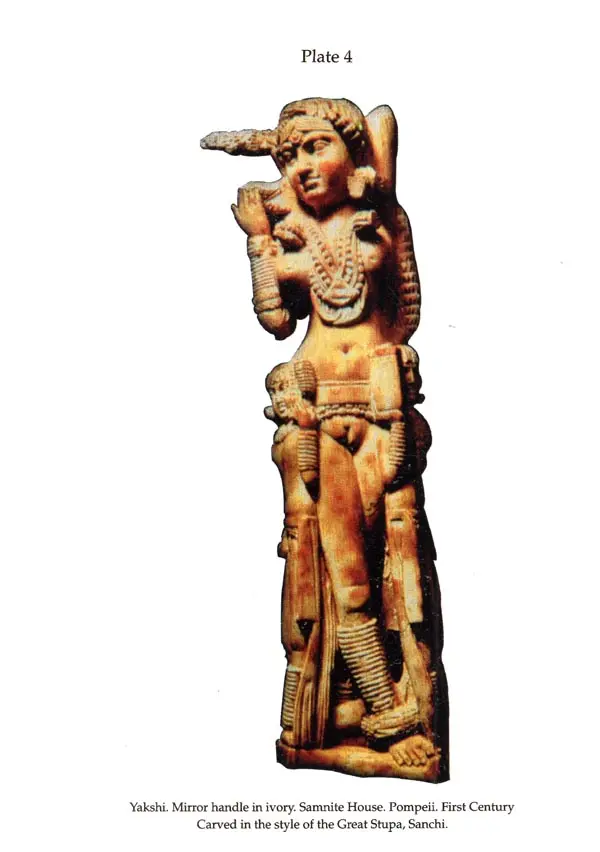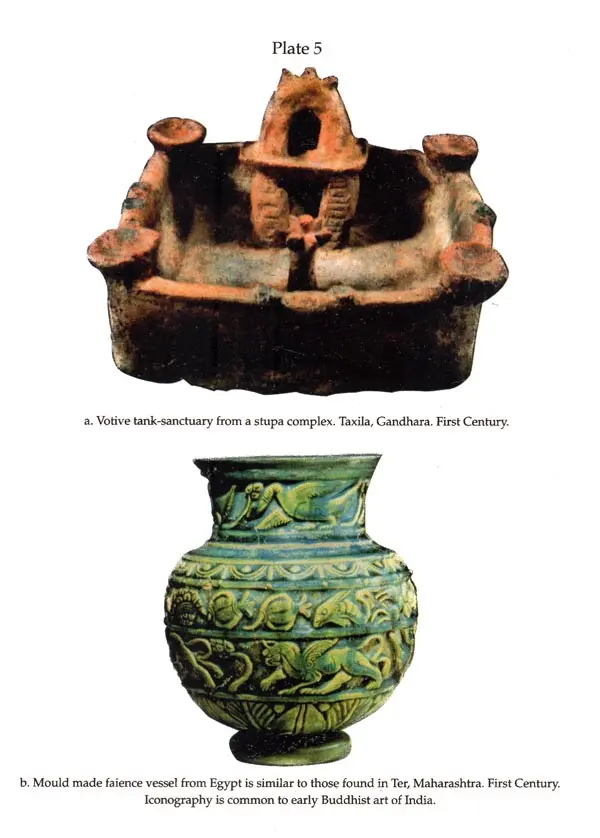
Art of Terracotta- Cult and Cultural Synthesis in India
Book Specification
| Item Code: | UAN356 |
| Author: | Arputha Rani Sengupta |
| Publisher: | Agam Kala Prakashan, Delhi |
| Language: | English |
| Edition: | 2005 |
| ISBN: | 9788173200521 |
| Pages: | 296 (Throughout Color and B/w Illustrations) |
| Cover: | HARDCOVER |
| Other Details | 11.00 X 9.00 inch |
| Weight | 1.03 kg |
Book Description
The story of terracotta in India is by no means linear. It begins suddenly in the proto historic Harappan Culture and then disappears and resurfaces just as suddenly in almost the same level during the historic period, signalled by literacy through the adoption of Aramaic script. The key to the creation of terracotta images is reciprocity, the give and take among the people of different origins who converged in the subcontinent for historic reasons. However, the antecedents of the morphology of ancient terracotta in the Indian subcontinent are not known. During the early Christian era, when cults were proliferating in the then known world, faith in the Buddha guided by divine wisdom left for the birth of a nation and its unique culture the seed of a new generation. For the first time an attempt is made to view the art of terracotta in India in its historic context.
The art of terracotta is interwoven with skill in the shaping of diverse medium, including the art of ivory carving, relief work in precious metal, bronze casting in the lost wax process and surprisingly weaving as well. The expertise in multi media among the craft persons is well established through inscriptions in early works of Indian art. In particular the practice of applying vencer of terracotta relief panels to architecture combines the desire to clothe monuments in figured silk, expressing a need for permanence. Commencing from the practice of cladding Buddhist funerary monuments, the terracotta reliefs attain the distinction as works of art in the carly temples of the Gupta period and the late medieval brick temples of Bengal. The complexity of communication in the art of terracotta relates to nature and retains the mystery of memory that each successive generation retains as part of language as a key to survival. The diamond track of didactic clay is multidimensional and the Art of Terracotta takes into consideration the historic, religious and sociological aspects, amongst others Interestingly the terracotta reliefs from the terracotta temples of Bishnupur provide an important link to the tradition of contemporary miniature paintings in Rajasthan and Orissa. The unpublished line drawings by the author are exclusive images that provide intimate details often missed in the photographs.
In Bengal, where clay is the natural medium, terracotta relief as adomment to sacred architecture takes its form and content from the narrative scroll paintings. The cosmic form of the terracotta temples of Bengal are exemplified by the four classic examples from Bishnupur Shyamra, Jor Bangla, Madan Mohan and Jor Mandir of the sixteenth and seventeenth centuries AD. The terracotta reliefs from these temples have, in particular, influenced the figured brocade weaving of Baluchari silk. The art of terracotta has also been a valuable source of textile design, particularly in block printing.
Dr. Arputha Rani Sengupta takes care to describe various techniques, including the skill of a jeweller in the carving of several terracotta plaques. Some of the ancient clay images, such as the 'Oxford Yakshi' have been impressed form moulds made with the skill of a gem carver. There is a rich collection of terracotta plaques and figurines from the proto-historic period to the more recent times that have been carefully preserved in the various museums in India and abroad. The author makes careful selection to demonstrate the cult and religious value of the art of terracotta from the proto historic period onwards.
As an accomplished artist Dr. Sengupta has done all the line drawings in the book illustration. which also demonstrates the creative process in terracotta relief sculpture. She gives particular attention to the religious content of the terracotta relief from the temples. The swurnaluva or the sonar bangla built of brick and covered with terracotta relief is transformed into a golden edifice by fire and sun rays. The astonishing variations in the plaques covering the entire walls, vaults, domes, archways and cupolas are meant to glorify the gods and the Malla kings of Bishnupur.
In conclusion, Dr. Sengupta traces the origin of terracotta temples to the form of the ratha, the mobile home of a deity taken on wheels for ritual purpose. She also reveals an astonishing similarity between Shyamrai temple and the Mughal tomb of Itimad-ud-Daula in Agra, which, according to Klaus Fisher, derives its form from the Sassanian Fire Temple, whose primary function was to maintain the sacred flame of the dynasty. In the Allegories of Reading, the author concludes that the terracotta temples have accomplished just that, while consistently maintaining the incorruptible and eternal quality of terra-gold in the process.
